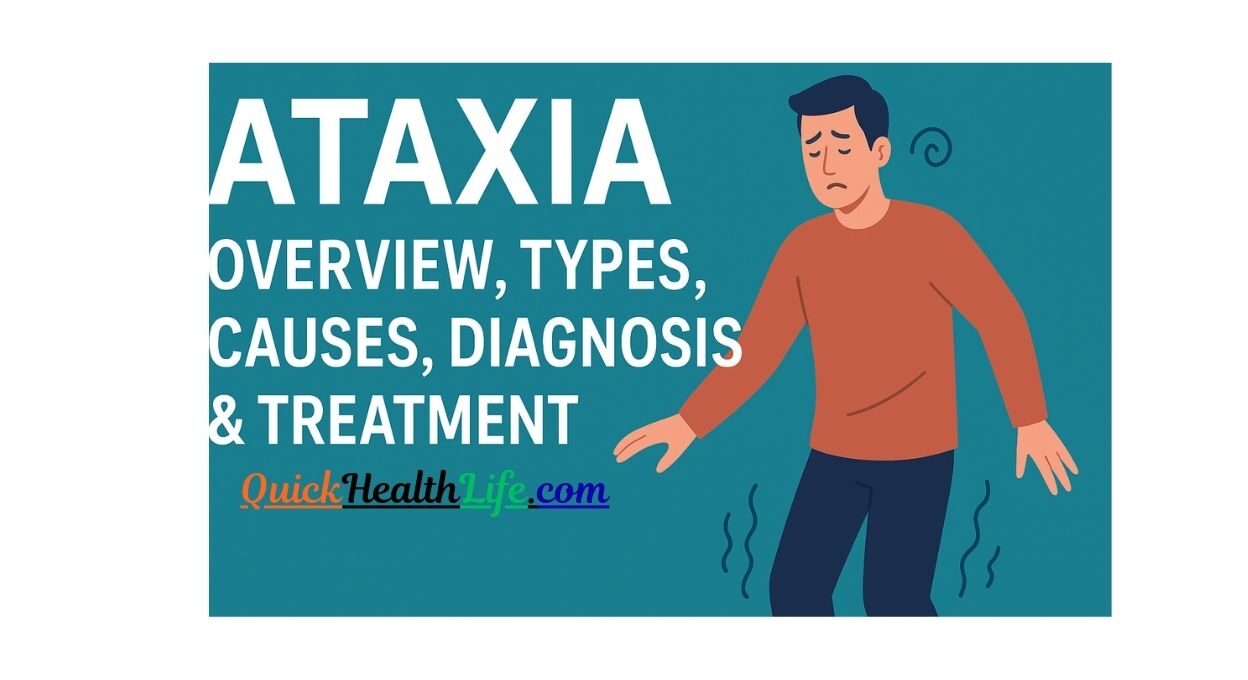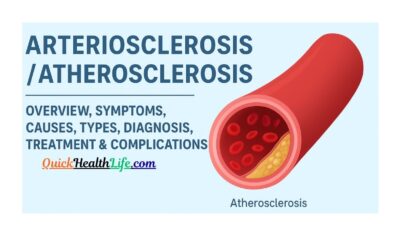What Is Ataxia?
Ataxia is a disorder where your muscles don’t work together as smoothly as they should. It’s not a disease itself but a symptom of problems in the cerebellum (the brain’s balance center), nerves, or inner ear. People with ataxia may stumble when walking, have slurred speech, or struggle with fine movements like buttoning a shirt.
Table of Contents
Major Types of Ataxia
Doctors usually describe three main types:
Cerebellar Ataxia
This happens when the cerebellum is damaged—often due to stroke, multiple sclerosis, or long-term alcohol use. Signs include wide, unsteady walking and shaky hand movements.
Sensory Ataxia
Here, the nerves that send information from your legs to the brain are affected. You might feel numbness in your feet and need to watch your steps carefully.
Vestibular Ataxia
This type starts in the inner ear. Vertigo (a spinning feeling) is a big clue.
Causes of Ataxia
Ataxia can be genetic or acquired.
- Genetic ataxias: Conditions like Friedreich’s ataxia or spinocerebellar ataxia run in families.
- Acquired ataxias: Stroke, brain tumors, vitamin B12 deficiency, head injuries, alcohol misuse, and certain drugs can all trigger ataxia.
Ataxia vs. Apraxia
People often confuse these terms. Ataxia means you want to move but can’t coordinate properly. Apraxia means your brain struggles to plan the movement even though your muscles work.
Example:
- Ataxia – You try to touch your nose but your hand shakes off course.
- Apraxia – You can’t start the movement even though you’re strong enough.
Common Symptoms
- Poor balance and frequent falls
- Slurred speech
- Trouble swallowing
- Hand tremors
- Eye movement problems
Diagnosis of Ataxia
Doctors start with a neurological exam and may use MRI or CT scans to check the brain. Blood tests can find vitamin issues or infections. The official ICD-10 code for hereditary ataxia is G11.
Treatments for Ataxia
There’s no single cure, but several strategies help:
Physical & Occupational Therapy
Exercises improve strength and coordination. Therapists can recommend mobility aids.
Medications & Supplements
If a vitamin deficiency is the cause, supplements like vitamin E or B12 can make a big difference.
Surgical & Advanced Options
Tumor removal or deep brain stimulation may help in rare cases.
Living with Ataxia
- Use handrails and grab bars at home
- Eat a nutrient-rich diet
- Join support groups for emotional strength
Preventing Complications
Early treatment of infections, avoiding alcohol, and regular checkups lower the risk of worsening symptoms.
Prognosis & Life Expectancy
Many people live long lives with proper care. Death from ataxia usually relates to complications like falls or severe swallowing problems, not the ataxia itself.
FAQs On Ataxia
1. What is ataxia and what causes it?
It’s a movement coordination disorder caused by brain, nerve, or inner-ear issues.
2. What are the 3 types of ataxia?
Cerebellar, Sensory, and Vestibular.
3. How do you diagnose ataxia?
Through neurological exams, imaging tests, and sometimes genetic screening.
4. What’s the best treatment for ataxia?
Treating the root cause plus therapy for balance and strength.
5. What’s the difference between ataxia and apraxia?
Ataxia is poor muscle coordination; apraxia is trouble planning movements.
6. Can ataxia be prevented?
Not always, but healthy habits and early treatment of vitamin deficiencies help.



